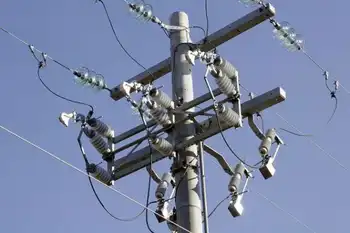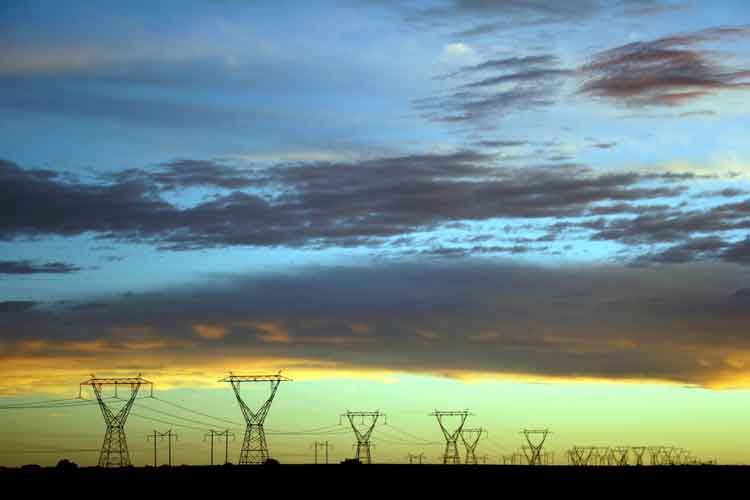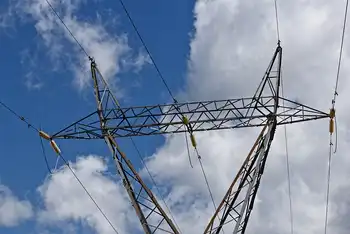Nervous analysts urged power plant settlement
By McClatchy Tribune News
Arc Flash Training CSA Z462 - Electrical Safety Essentials
Our customized live online or in‑person group training can be delivered to your staff at your location.

- Live Online
- 6 hours Instructor-led
- Group Training Available
But the calls were about the costliest construction project in state history, the $2.3 billion We Energies power plant being built in Oak Creek. Jittery stock analysts visited with representatives of Clean Wisconsin in Madison this spring, wanting to know whether its eight-year dispute over the building of a coal-fired generating plant could be resolved.
Those jitters were restraining the company's stock price and were a key driver behind the settlement reached between We Energies and environmental groups. A deal was reached just hours before utility executives were scheduled to field questions from analysts about the plant's status.
The settlement ended the last piece of litigation, which was being fought over the power plant's cooling system. It not only removed hurdles to the plant's opening, it also meant costly cooling towers wouldn't have to be built. Clean Wisconsin and the Sierra Club, in turn, won utility company commitments on a couple of high-profile environmental issues - the Great Lakes and global warming.
Although the deal was in the works for six months, it didn't get done until utility executives faced their quarterly conference call with investors. "They were clear they wanted to settle this thing before that analyst call," said Katie Nekola, energy program director at Clean Wisconsin.
"We wanted to communicate that certainty could be accomplished. That is very true," said Barry McNulty, We Energies spokesman.
Investors continued to focus on the drawn-out litigation even though We Energies had won more rulings on the power plant than it had lost, said David Parker, investment analyst at Robert W. Baird & Co. in Tampa, Fla. "People just like to have everything finalized and done," he said.
Had the litigation persisted, it's possible a court would have overturned the permit for the plant's Lake Michigan water cooling system and required cooling towers to be built at a cost of $300 million to $400 million.
And there was no guarantee the utility could operate its new power plant until the cooling towers were built. With a start-up date of 2011, the Oak Creek power plant is projected to boost earnings of We Energies' parent company, Wisconsin Energy Corp., by $100 million a year.
If approved by state regulators, the settlement reached with We Energies and two other state utilities would provide $4 million a year for 25 years to pay for projects that address problems in Lake Michigan, from invasive species to runoff pollution, from farm fields and suburban lawns.
Nearly $3 million a year would come from We Energies ratepayers.
The settlement also includes a series of commitments to expand the use of renewable energy in the state, including support for legislation to require that 25% of the state's electricity come from wind turbines, solar panels and other renewable power sources by 2025.
Rallying against coal Environmental groups have held rallies, run advertising campaigns and gone to court since 2003 to try to stop the Oak Creek project. Their efforts continued even after the Supreme Court decided by a 4-3 vote in 2005 to allow construction of the plant to proceed.
Since that time, the rallying cry against coal-fired power plants has grown louder around the country, and utilities have scrapped plans for new plants from Texas to Florida.
In Madison, Sierra Club lawyer Bruce Nilles now spearheads a national campaign against construction of new coal plants. For Wisconsin utilities, Nilles has been a tough, at-times maddening adversary, given his knack for speaking in strong terms about how coal plants are a leading source of heat-trapping carbon dioxide emissions.
Of Wisconsin's pattern of building new coal plants, he said last year: "We're at the forefront of going backwards." Nilles said he, too, was glad to reach a deal with We Energies and "bury the hatchet."
Reaching a deal, he said, was bowing to the physical reality that the coal plant's cooling system was already built in Lake Michigan, and that it was too late to stop the Oak Creek project altogether.
What changed that led to a deal? Not only the fact that the plant is scheduled to open next year, participants said, but also the fact that the environmental groups and utilities have been working alongside one another for more than a year as members of the state's global warming task force. Both sides supported the task force's more than 60 recommendations to Gov. Jim Doyle.
Nilles said he is pleased that the utility and its partners, Madison Gas & Electric Co. and Wisconsin Public Power Inc., agreed to support legislation to expand the state's renewable energy requirement. Under the new proposal, 10% of Wisconsin's electricity would come from renewable sources by 2013, two years faster than state law now requires.
Although this case is settled, Nekola of Clean Wisconsin said she expects her phone will keep ringing. In fact, she has a meeting scheduled with investment analysts again in Milwaukee. We Energies will certainly be on the agenda, but the bigger issue on investors' minds is in southwestern Wisconsin.
Investors are wondering whether state regulators will permit Madison-based Alliant Energy Corp. to build a $1.1 billion coal-fired power plant in Cassville. Clean Wisconsin and Sierra Club are the most vocal opponents of the plant, although that plant's use of biomass has won support from groups such as the Wisconsin Farm Bureau Federation and the Wisconsin BioIndustry Alliance.
Settling with We Energies made sense, Nilles said. "It allows us to focus going forward on Alliant's idea of building in Cassville."











